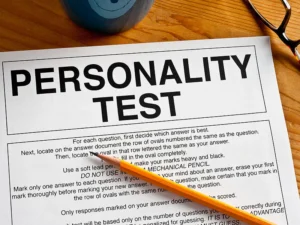Imagine this: You send a simple text to your partner, “Okay, do what you want.” You meant it playfully, maybe even teasingly, but on the other end of the screen, they read it as cold, dismissive, maybe even resentful. And just like that, a small misunderstanding spirals into an argument neither of you saw coming. Welcome to the world of misread tones in virtual communication, a reality that plagues long-distance relationships and beyond.
Let’s paint another scenario, taking Sarah and Dele, for example.
Sarah was excited about a weekend getaway with her friends and texted Dele,
“I’ll be away this weekend, but we can talk later!” She meant it casually, assuming he’d understand.
Dele, however, had been feeling a little distant from her lately and read it as, “I don’t have time for you.”
Instead of asking her about it, he responded with, “Cool.
Have fun.” Sarah saw his reply and felt he was being passive-aggressive. She then replied with a simple “Thanks,” but by this point, both of them were already upset. What could have been a simple, happy exchange turned into a cold, tense silence for hours all because of how their messages were interpreted.
It’s crazy how something as small as a text message can shift the entire mood of a conversation. Unlike face-to-face conversations, texts lack vocal inflection, facial expressions, and body language, which are key elements that give context to our words. In the absence of these cues, the brain fills in the gaps, often projecting emotions based on mood, past experiences, and personal insecurities. That’s why a simple “fine” can either mean “everything is good” or “I’m furious, but I won’t say it.”
Additionally, text messages are often written quickly, with little thought given to how they might be interpreted. Without vocal tone or facial cues to soften a blunt statement, even a well-intended message can come across as harsh or indifferent. This lack of nuance is what makes text communication so prone to misunderstandings, especially in emotionally sensitive conversations.

I think it’s safe to say we’ve all been there. You send a message and get a dry response. Your mind starts racing—Did I say something wrong? Are they upset? Maybe you even reread your own message a few times, trying to see if it could have come across differently. The worst part? Half the time, the other person has no idea you’re overthinking it. They were just busy, tired, or didn’t think a short reply would mean anything. But by the time they check their phone again, you’ve already convinced yourself that they’re upset, and now you’re responding coldly too. Just like that, a tiny misunderstanding turns into actual tension.
Long-distance couples deal with this more than anyone. When your entire relationship depends on texts, voice notes, and video calls, every little misunderstanding feels bigger. If you were together in person, you could just look at their face and know they weren’t upset. But when you’re miles apart, there’s no way to tell. And let’s not even talk about time zones. One person sends a message, the other is asleep. By the time they reply, hours have passed, and now someone feels ignored. It’s exhausting.
Even outside of relationships, this happens all the time. You send a work message, trying to keep it professional, but your boss or colleague reads it as rude. Or you text a friend something casual, and they respond with, “Are you okay? You sound off.” It’s frustrating because you know what you meant, but once the words leave your phone, you don’t control how they’re received.
How to Stop Misread Tones from Wrecking Your Virtual Communication
Pause Before Reacting: Give People the Benefit of the Doubt
Our brains are wired to fill in gaps when information is missing—and sadly, they often fill those gaps with negative assumptions. When a message feels cold, short, or slightly off, pause before reacting emotionally or assuming the worst.
Ask yourself: Is it possible they were just in a rush? Could they be distracted, tired, or stressed?
99% of the time, the person isn’t trying to be rude or harsh—it’s just the message came out flatter than intended.
Take a deep breath. Re-read the message later with fresh eyes if needed. And if you still feel unsettled, address it calmly instead of letting it fester.
When in Doubt, Ask—Don’t Assume
One of the most underrated but powerful communication habits is simply asking for clarity instead of assuming intentions.
Instead of jumping to conclusions, try saying,
“Hey, I might be reading this wrong, but did you mean that in a certain way?”
That one sentence can clear the air faster than a hundred overanalysed texts. It prevents the situation from escalating into unnecessary arguments or silent resentment. Remember, texting isn’t mind-reading. The fastest route to peace is curiosity, not assumption.
Switch to Voice Notes or Calls: Let Them Hear Your Tone
Text is easy, but it comes with a cost: tone gets lost.
When conversations start to feel tense or layered with possible misreadings, switch to voice notes or calls.
Hearing someone’s actual voice softens the conversation instantly. You pick up on tone, warmth, and pauses—things text can never fully convey.
Even a short voice note saying, “Hey, just wanted to say this out loud so it doesn’t get lost in text” can make a world of difference.
And yes, picking up the phone might feel like extra effort in our text-happy world, but it’s effort that saves you from hours of misinterpretations, overthinking, or unnecessary drama.
Add Warmth & Context to Your Messages
Sometimes all it takes to avoid sounding cold is a little extra context.
Instead of replying with a blunt “fine,” say “I’m fine, just a little tired today!”
Better yet, sprinkle in an emoji where appropriate. (Of course, skip this in formal settings—but in casual chats? They work wonders.
These small add-ons give your message personality and warmth, letting the other person feel your mood rather than guessing it.
In digital communication, a little extra effort goes a long way in keeping the human connection alive.
Don’t Let Texting Define Your Entire Relationship
Don’t let texting shape your whole relationship. Long-distance or not, messages should be a bridge, not a wall. No matter how careful you are, misunderstandings will happen. What matters is how you handle them. Instead of overthinking every message, focus on giving your partner, friend, or coworker the benefit of the doubt. It’s easy to assume the worst, but more often than not, the other person wasn’t trying to upset you at all.
Schedule video calls, voice chats, and meetups (where possible). Strengthen the offline or real-time connection, so when messages do get misread, they don’t feel like the end of the world—they’re just small bumps on a much stronger foundation.
When your relationship is built on trust and understanding, you’re less likely to let one misinterpreted message blow things out of proportion.
Build Emotional Resilience: Don’t Overthink Every Message
It’s easy to spiral over texts:
“What did they mean? Why the full stop? Was that sarcasm? Are they mad at me?”
Stop. Breathe. Step back.
Instead of tying yourself into knots, remind yourself that it’s just a message. You’ll never fully capture or control how someone receives it, and that’s okay.
Focus on building emotional resilience—trust that you can handle a bit of misunderstanding without letting it shake your entire day or relationship.
Not everything needs an over-explanation. Not every short message is a crisis. Sometimes, people are just… brief.
Remember: No Text Will Ever Replace Real-Life Connection
At the end of the day, words on a screen will never replace real-life connection. The key isn’t just crafting the perfect text, it’s having the kind of trust and understanding that makes misread messages a minor bump, not a relationship roadblock. So the next time a text rubs you the wrong way, before you spiral, take a step back. It might just be a case of lost-in-text translation.
Stay frosty!
Struggling with misread texts and awkward conversations? My ebook, The Articulate Mind: Master Real-Time and Virtual Communication, is your guide to mastering both real-time and virtual communication. Whether you want to express yourself clearly in texts, emails, or face-to-face interactions, this book will help you communicate with confidence, avoid misunderstandings, and build stronger connections. Get your copy now and take control of your conversation




